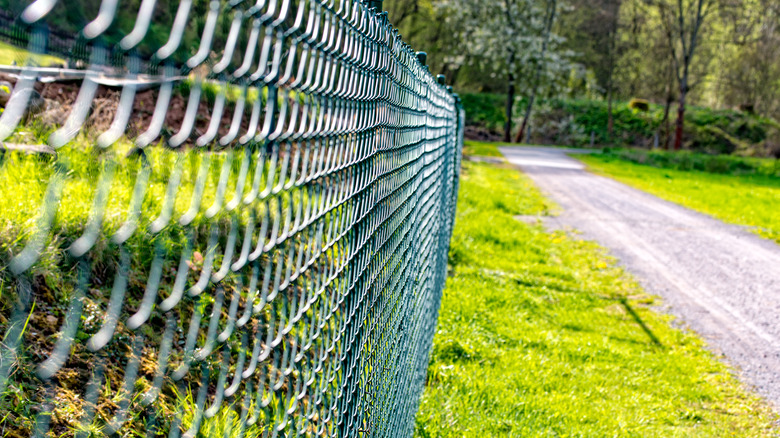Simple Tricks For Keeping Wolves Out Of Your Yard
In recent years, a good deal of attention has been placed on how to keep bears away from homes. But many who live in rural and suburban areas in the United States and Canada are struggling to keep wolves at bay as well. Canada has the largest population of these canines in the world, and the number in the continental United States is growing — just under one-third of the U.S. states have wolf populations (and just two with viable numbers). Additionally, many in North America are considered to be among the most dangerous species.
While this news may be a bit unsettling, wolves are typically shy and skittish of humans. However, they will begin to encroach onto property as they become more comfortable and if there's a benefit such as food or shelter. If you happen to live in an area that is home to a population of these feral canines, creating barriers, removing cover, and doing away with attractants are your best bets to keep them away.
Make it difficult for them to get in
As simple as it sounds, the easiest way to keep wolves out of your yard is to make it difficult for them to get in. This is a two-step process. The first is to remove brush, bushes, low-lying limbs, tall grass, or other vegetation these animals can use to conceal themselves as they approach the yard. The more difficult it is for them to hide themselves, the less likely they'll be to approach.
The next step is creating a barrier. The most effective is a fence made of chain-link or other wire that is considered animal-proof. However, there are a couple other things to consider to make sure your barrier works against wolves. For one, these canines can jump quite well, so ideally the fence should be 6 to 8 feet high. Secondly, they are very adept diggers, so the barrier should be buried at least a foot into the ground.
If such a fence is not possible, using a shorter, unburied electric design can also be effective, as can adding fladry to the blockade. In simple terms, fladry is a string of flags or patches of cloth strung along a perimeter to dissuade wolves. Simple as it sounds, it's an age-old European method of deterring wolves that Smithsonian Magazine says has proven surprisingly effective on modern-day species in North America. Fencing and brush removal can additionally be bolstered by the addition of lights and noise-making devices.
Takes steps to avoid attracting wolves – and their prey
It's also important to avoid doing anything that might attract wolves to your yard. It should go without saying, but you should never attempt to feed a wolf. Any animal food should also be secured and not left out, particularly overnight. And never dump food out into the yard — even composting material, as it may attract smaller animals that the wolves prey on, such as rabbits and mice.
Household pets and livestock are other potential wolf attractants. Dogs, in particular, can increase the odds of wolves entering a yard. The best choice for pet owners is to have indoor shelter — house, garage, or barn — for their dogs at nighttime. At minimum, your animals need to be behind a secure fence. Large dogs — as in breeds that are bigger than wolves — can serve as guard animals and both scare off wolves and alert homeowners when the canines come close.


